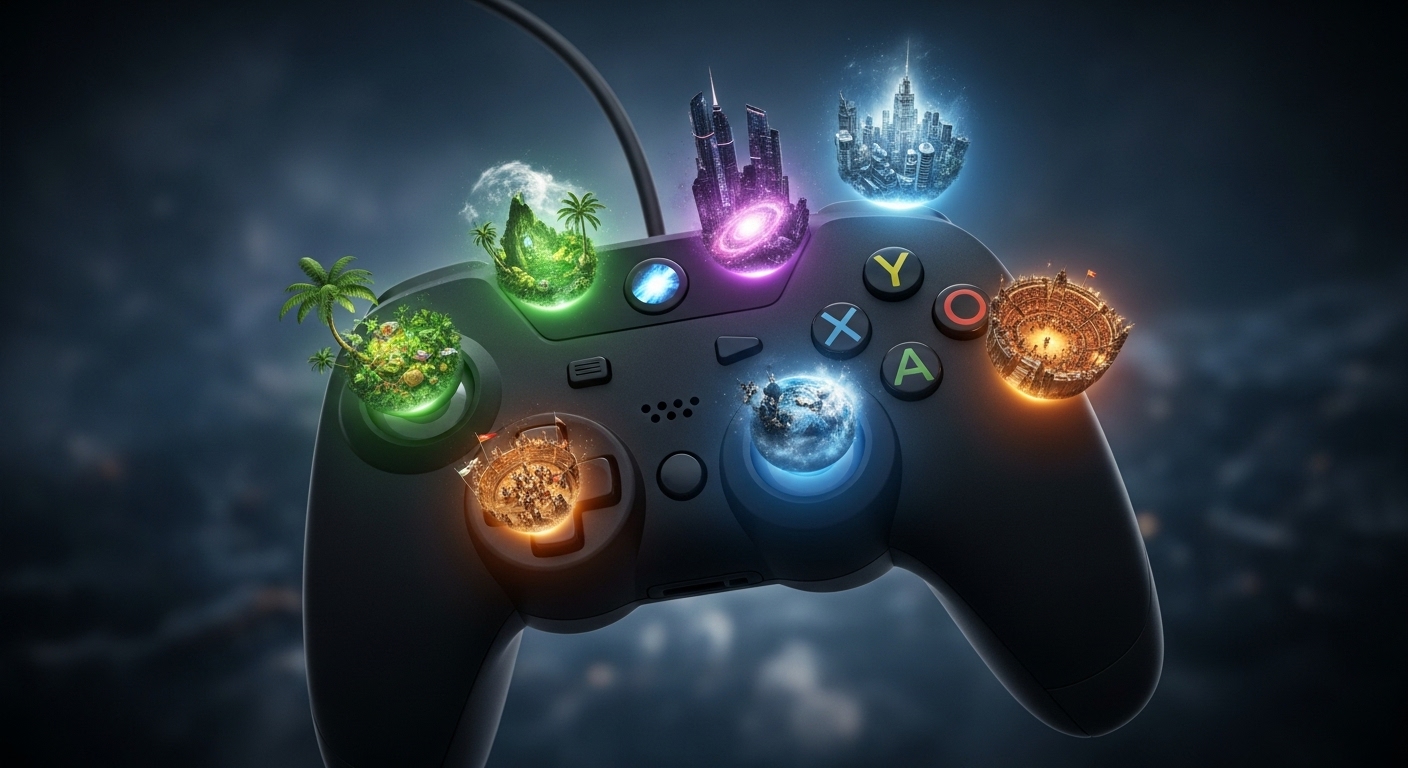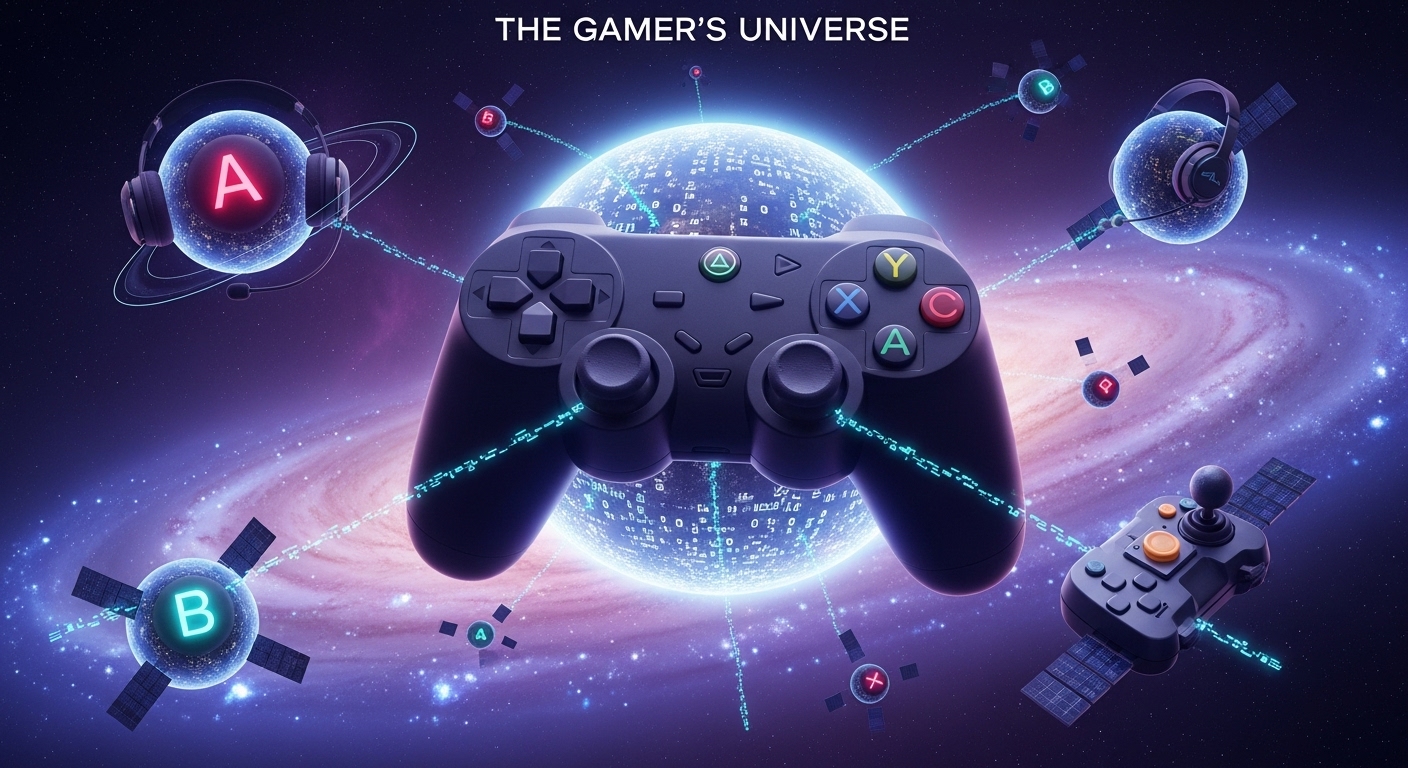The world of gaming has undergone a transformation that few other industries can match. What once began as a simple pastime for a select group of enthusiasts has evolved into a multi-billion-dollar global industry that shapes not only entertainment but also culture, technology, and social interaction. From the early days of arcade machines and 8-bit consoles to today’s hyper-realistic virtual worlds, the history of gaming is a story of rapid innovation, shifting trends, and changing perceptions.
Gaming today isn’t just a hobby—it’s a global phenomenon. It’s a form of art, a competitive sport, a social gathering, and a medium of storytelling all rolled into one. With the rise of mobile gaming, cloud gaming, esports, and virtual reality (VR), the industry shows no signs of slowing down. But what exactly has driven this incredible growth? How did gaming evolve from simple, pixelated screens to the immersive experiences we enjoy today? In this post, we’ll take a deep dive into the history, present, and future of gaming, exploring the technological advancements, cultural shifts, and social changes that have shaped this dynamic industry.
The Early Days of Gaming: The Rise of Arcades and Consoles
The roots of modern video gaming can be traced back to the 1950s and 1960s, with early experiments in computer graphics and interactive entertainment. However, it wasn’t until the 1970s that gaming began to gain widespread popularity.
The Birth of Arcade Gaming
The first widely recognized video game, Pong, created by Atari in 1972, marked the beginning of the gaming revolution. It was a simple yet addictive game—a digital version of table tennis—where players controlled paddles and tried to hit a ball back and forth across the screen. Its release marked the first time that video games were made available to the general public, and the arcade became the place to be for gamers.
Arcades soon flourished as they became home to games like Space Invaders (1978), Pac-Man (1980), and Donkey Kong (1981), which were not only innovative but also captured the imaginations of millions of players. These games introduced players to new forms of entertainment, where reflexes and hand-eye coordination were put to the test, and high scores became a point of pride. For many, these arcade machines were the gateway into the world of video games.
The Home Console Revolution
While arcades were thriving, the home gaming console was just beginning to emerge. In 1977, Atari released the 2600, one of the first widely successful home consoles. It allowed players to enjoy games like Asteroids and Missile Command in the comfort of their own homes. Though the graphics were crude by today’s standards, the 2600 marked a huge leap forward in making gaming accessible to a broader audience.
Throughout the 1980s, the home console market exploded. Nintendo released the Nintendo Entertainment System (NES) in 1985, which became one of the most successful consoles of all time. With iconic games like Super Mario Bros., The Legend of Zelda, and Metroid, the NES helped establish the foundation for modern gaming and turned many of its franchises into household names.
The 1980s and 1990s also saw the introduction of Sega Genesis, Super Nintendo, and the Sony PlayStation, which further pushed the boundaries of what games could be. These consoles introduced more complex graphics, immersive soundtracks, and larger, more detailed worlds that captivated players. As the technology improved, so too did the depth of gaming experiences.
The 3D Revolution: Shaping the Modern Era of Gaming
As the technology behind video games advanced, so too did the capabilities of gaming consoles and PCs. The arrival of 3D graphics in the 1990s was a game-changer, allowing developers to create visually immersive worlds that had never before been possible.
The Power of 3D Graphics
The arrival of the Sony PlayStation in 1994, with games like Gran Turismo and Final Fantasy VII, signified a turning point in the evolution of gaming. The PlayStation was a major leap forward in both performance and graphics, bringing 3D environments to the mainstream. This shift paved the way for games that felt more like fully realized worlds, rather than static images or side-scrolling levels.
At the same time, Nintendo 64 (released in 1996) introduced groundbreaking games like Super Mario 64, which allowed players to explore a fully 3D world for the first time. The PlayStation and Nintendo 64 set the stage for the next generation of gaming experiences—ones that were no longer limited by the confines of 2D graphics.
The transition from 2D to 3D also ushered in the era of open-world games. Titles like The Elder Scrolls III: Morrowind (2002) and Grand Theft Auto III (2001) allowed players to explore expansive, fully realized worlds with a degree of freedom previously unseen in gaming. The ability to walk, run, and interact with a world in three dimensions was a revolutionary step forward.
The Rise of Online Gaming
As internet access became more widespread, gaming quickly shifted from being a solo or local multiplayer experience to a global, interconnected phenomenon. Online gaming became a staple of the industry in the late 1990s and early 2000s, with games like Warcraft II, Quake, and Counter-Strike allowing players to compete against each other over the internet. This marked the beginning of competitive gaming and the foundation of what would eventually become the massive esports industry.
Sony’s PlayStation Network and Xbox Live further pushed online gaming into the mainstream in the 2000s. These networks allowed players to connect, chat, and compete with each other from the comfort of their homes. Titles like Halo 2 (2004) and Call of Duty 4: Modern Warfare (2007) became pillars of online multiplayer gaming, attracting millions of players worldwide.
Mobile Gaming: Gaming for Everyone, Anytime, Anywhere
The advent of smartphones in the 2000s revolutionized gaming once again, this time by making it more accessible than ever before. Suddenly, gaming was no longer confined to dedicated consoles or PCs—it could be played anywhere, anytime, on devices that most people already carried in their pockets.
The Explosion of Mobile Games
With the introduction of the Apple iPhone in 2007, mobile gaming entered a new phase. The App Store, which launched in 2008, gave developers a platform to release games directly to consumers. This led to the rise of casual gaming, with titles like Angry Birds, Candy Crush Saga, and Clash of Clans reaching hundreds of millions of players.
Mobile games became a cultural phenomenon, offering bite-sized, accessible experiences for players of all ages. These games allowed people to engage with gaming during commutes, lunch breaks, or while relaxing at home. The rise of mobile gaming also democratized the gaming industry, as anyone with a smartphone could now participate.
Free-to-Play and Microtransactions
Mobile gaming also introduced the concept of free-to-play games, which allowed players to download and play games for free but offered in-app purchases to enhance the experience. This model, while initially met with skepticism, has become a staple of mobile gaming and has spread to console and PC games as well. The use of microtransactions has sparked debates about fairness, with some players criticizing the model for creating pay-to-win dynamics.
Nevertheless, the free-to-play model has been incredibly successful, with games like Fortnite and PUBG Mobile generating billions of dollars in revenue through in-game purchases. This model has reshaped the way games are monetized and how developers approach game design.
The Future of Gaming: Virtual Realities, Cloud Gaming, and AI
As technology continues to advance, the future of gaming looks even more exciting. From virtual reality (VR) and augmented reality (AR) to cloud gaming and the integration of artificial intelligence (AI), gaming is on the verge of another revolution.
Virtual Reality: Immersing the Player
The promise of virtual reality has long been a part of science fiction, but with recent advancements, it is becoming a tangible part of the gaming world. VR headsets like the Oculus Rift, PlayStation VR, and HTC Vive offer players the chance to step into fully immersive 3D worlds where they can interact with their surroundings as if they were really there. Games like Beat Saber and Half-Life: Alyx have demonstrated the potential of VR to create deeply engaging experiences.
While VR technology is still in its early stages and there are some limitations—such as the need for powerful hardware and the potential for motion sickness—the future of VR gaming is incredibly promising. As the technology continues to evolve, it could lead to fully immersive experiences where players live out virtual adventures, solve complex puzzles, and engage in epic battles.
Cloud Gaming: Playing Without Boundaries
Another exciting development in the future of gaming is cloud gaming. Services like Google Stadia, Xbox Cloud Gaming, and NVIDIA GeForce Now allow players to stream games directly to their devices, bypassing the need for expensive hardware like gaming PCs or consoles. Cloud gaming enables gamers to play graphically demanding titles on devices with relatively low processing power, making gaming more accessible to a wider audience.
The cloud gaming model also offers the potential for a truly cross-platform experience. Players could access their games from a smartphone, tablet, or smart TV and seamlessly transition between devices. As internet speeds improve and data centers expand, cloud gaming could become the dominant way to play video games in the coming years.
AI and Procedural Generation: New Frontiers in Game Design
Artificial intelligence and procedural generation are set to revolutionize how games are developed and played. AI-powered systems can create more responsive and intelligent non-player characters (NPCs), enabling more dynamic and immersive game worlds. Games like The Last of Us Part II and Red Dead Redemption 2 already feature highly sophisticated AI that makes interactions feel more lifelike, but future games will likely take this even further.
Procedural generation, on the other hand, uses algorithms to create massive, randomly generated worlds. Games like Minecraft and No Man’s Sky already feature procedurally generated landscapes, but future iterations of this technology could lead to virtually endless worlds for players to explore.
Conclusion: Gaming’s Bright Future
From its humble beginnings in arcade halls to the cutting-edge VR and cloud gaming experiences of today, the gaming industry has come a long way. The evolution of gaming has not only changed the way we interact with technology but has also shaped how we socialize, learn, and experience stories.
As gaming continues to evolve, we can expect even more exciting innovations on the horizon. Virtual reality, cloud gaming, AI, and procedural generation are just the beginning of what promises to be an even more immersive and dynamic future for gamers around the world. The gaming world is constantly changing, and the future holds limitless possibilities.
Whether you’re a casual player or a dedicated esports enthusiast, one thing is clear: gaming is no longer just a pastime. It’s an integral part of our culture, our entertainment, and our digital lives. And as technology continues to push the boundaries of what’s possible, gaming’s journey is only just beginning.



